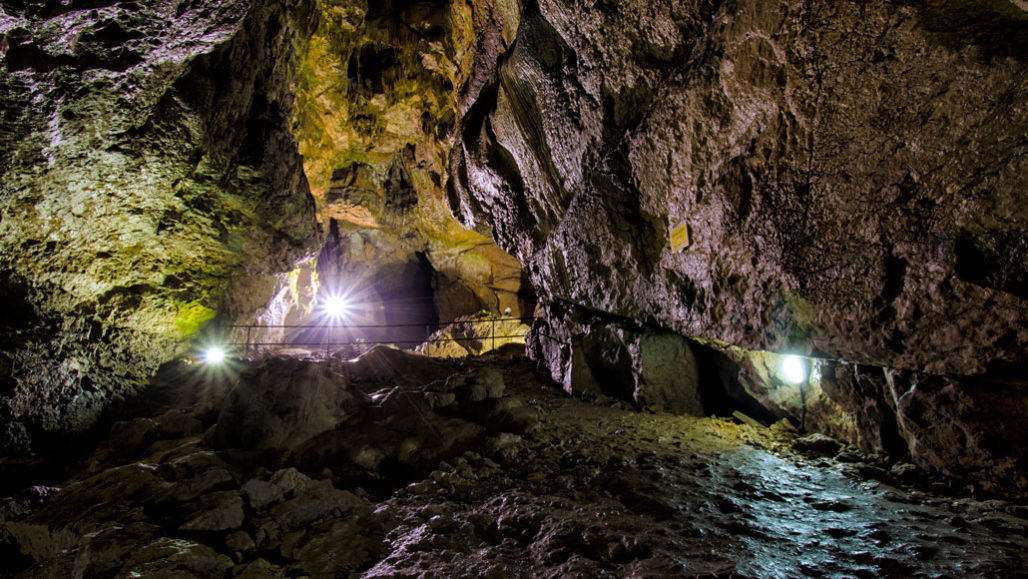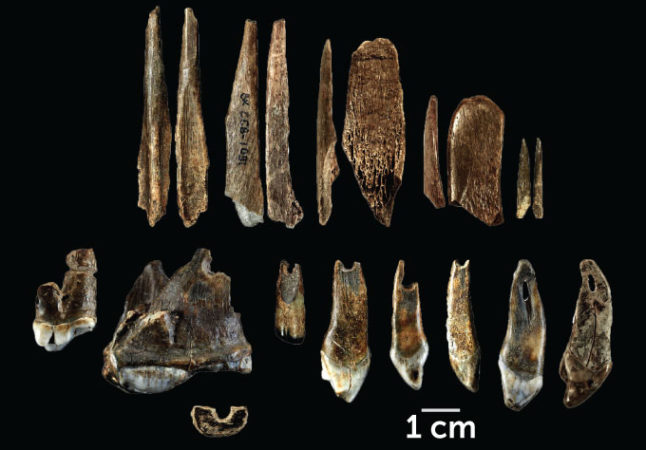This cave hosted the oldest known human remains in Europe
These Homo sapiens lived about 46,000 to 44,000 years ago, researchers say

Excavations in Bulgaria’s Bacho Kiro Cave (shown) unearthed the oldest directly dated remains of Homo sapiens in what’s now Europe, researchers say.
Monodon/iStock/Getty Images Plus
By Bruce Bower
The oldest directly dated human remains have turned up in a Bulgarian cave. The tooth and six bone fragments are more than 40,000 years old.
The new discoveries came from Bulgaria’s Bacho Kiro Cave. They support a scenario in which Homo sapiens from Africa reached the Middle East some 50,000 years ago. Then they rapidly spread into Europe and Central Asia, the scientists say.
Other fossils had been found in Europe that seemed to come from a similarly early time. But their ages — perhaps 45,000 to 41,500 years old — were not based on the fossils themselves. Instead, their dates came from sediment and artifacts found with the fossils.
Still other human fossils could be much older. One skull fragment from what’s now Greece might date to at least 210,000 years ago. It was reported last year. If true, that would be the oldest by far in Europe. But not all scientists agree it’s human. Some think it could be Neandertal.
Jean-Jacques Hublin studies ancient human ancestors at the Max Planck Institute for Evolutionary Anthropology. It’s in Leipzig, Germany. He led the team that found the new fossils. At first, he says, only the tooth was recognizable. The bone bits were too broken to identify by eye. But the researchers were able to extract proteins from them. They analyzed how the building blocks of those proteins were arranged. This can point to what species they come from. That analysis showed the new fossils were human.
The team also looked at mitochondrial DNA in six of the seven fossils. This type of DNA typically is inherited only from the mother. It, too, showed the fossils were human.
Helen Fewlass is an archaeologist at Max Planck. She led a second study that included many of the same researchers. Her team used radiocarbon dating to calculate the fossils’ age. Hublin’s group also compared their mitochondrial DNA to that of ancient and present-day people. The two methods consistently dated the fossils to around 46,000 to 44,000 years ago.
The teams describe the finds and ages May 11 in two papers in Nature Ecology & Evolution.

Toolmakers
The researchers turned up cultural artifacts along with the fossils. They are the earliest known stone tools and personal ornaments. They come from what’s known as the Initial Upper Paleolithic culture. These people left behind small, sharpened stones with pointed ends. The stones may have been attached to wooden handles at one time, Hublin and colleagues say. The new results suggest that Initial Upper Paleolithic tools were made for only a few thousand years. Then they were replaced by a later culture. That was known as Aurignacian. Previous European excavations date Aurignacian items to between 43,000 and 33,000 years ago.
The newly found items include stone tools and pendants made from cave bear teeth. Similar objects were made a few thousand years later by western European Neandertals. Ancient humans in Bulgaria may have mingled with native Neandertals. Human-made tools might have inspired the later Neandertal designs, Hublin says. “The Bacho Kiro cave provides evidence that pioneer groups of Homo sapiens brought new behaviors into Europe and interacted with local Neandertals,” he concludes.
Chris Stringer wasn’t part of the new studies. He works at the Natural History Museum in London, England. And this paleoanthropologist has a different idea. He notes that Neandertals made jewelry out of eagle talons around 130,000 years ago. That’s long before H. sapiens are generally thought to have first reached Europe. So the newcomers’ ornaments may not have inspired the Neandertals after all, Stringer says.
Initial Upper Paleolithic toolmakers likely faced a tough time in Europe, he notes. Their groups may have been too small to stay or survive very long. The climate fluctuated a lot at that time. He suspects they also confronted larger groups of Neandertals. Instead, he argues, the Aurignacian toolmakers are who first took root in Europe.
Bacho Kiro discoveries help fill in where and when H. sapiens settled in southeastern Europe, says Paul Pettitt. He’s an archaeologist at Durham University in England. Like Stringer, he was not part of Hublin’s team. He, too, suspects ancient humans’ stay at Bacho Kiro “was brief and ultimately a failure.”
The cave site also hosts more than 11,000 fragments of animal bones. They come from 23 species, including bison, red deer, cave bears and goats. Some of these bones showed stone tool marks. These appear due to butchery and skinning of the animals. Some also had breaks where marrow was removed, the researchers say.







